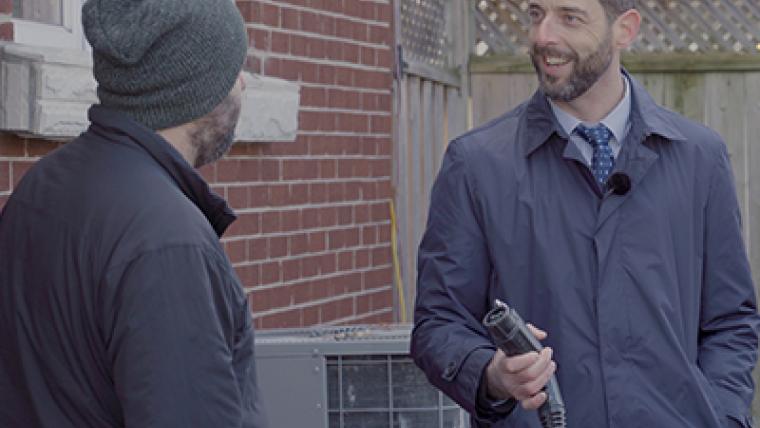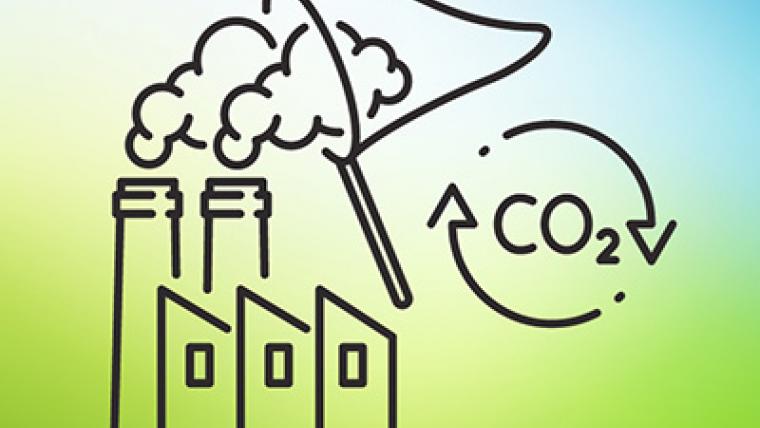Pipelines 101 (Ask NRCan)
Transcript
Host: Welcome everyone to another episode of Ask NRCan. This is a podcast series where we discuss a topic relating to the work that we do here at Natural Resources Canada or NRCan for short. We’re going to introduce a topic, we’ll discuss it with one of our NRCan experts, and then we’ll look to you to continue the conversation over social media. At the end of episode, if you have any questions on today’s topic, we strongly encourage you to go on Twitter and tweet at us using the hashtag “AskNRCan”. Our expert will do his or her best to answer all relevant questions.
Sounds good? Okay, on with the show.
Today, we’re going to be talking about pipelines. Now, the subject of pipelines is very polarizing. It’s a topic that gets a significant amount of media coverage and rightfully so – it’s an important issue. The purpose of this episode is not to debate our society’s relationship with fossil fuels. What we want to do is present you with unbiased information about pipelines in our country so that you, in turn, can actively participate in discussions on the subject. To accomplish this we’ve asked John Foran: to sit down with us and have a conversation. John is the director of the pipelines division here at NRCan. John, thank you for joining us today.
John Foran: No problem.
Host: Let’s start by taking a look at the overall picture. What can you tell us about pipelines as a whole in Canada? What are they used for and why do we need them?
John Foran: Okay, well, I’ll answer the last part of the question first. We need pipelines because we use gasoline and other petroleum products like diesel fuel and natural gas in our daily lives. For example, I have a car and other people don’t have a car. They don’t need gasoline but they probably public transit which mainly uses diesel in our country. Over half the homes in Canada are heated with natural gas. Natural gas is also used for cooking and water heating. So, in order to move natural gas from the producing fields in Alberta, Saskatchewan and British Columbia to the cities where it’s used you need pipelines. Natural gas has to be delivered as it’s used. Every home that uses natural gas has a small pipeline going into it. Similarly, petroleum products are used at all the airports across Canada for automobiles, large trucks that deliver the goods we use to stores, grocery stores, for example, use diesel. And, those products, diesel and gasoline come from refineries and they’re made out of crude oil so you need pipelines to move the crude oil to the refineries.
Another reason you need pipelines is that, since you need to have these products, and you need to have natural gas and crude oil moved around, you should use the system of transportation that has the lowest impact on the environment and the least inconvenience to the public and pipelines fit the bill there. Pipelines are not seen and buried underground so they don’t interfere with our daily lives and they’re very cost effective. Much more cost effective, for example, than moving crude oil by truck or rail.
There are about 760,000 kilometres of pipelines in this country of various size – from the very smallest garden hose plastic lines going into houses to deliver natural gas to 48 inch large steel pipelines that move crude oil or natural gas from the western provinces across the country.
Host: So you just said that pipelines are buried underground. Is that why I’ve personally never seen one?
John Foran: Exactly. If you lived in a city – most of the cities in Canada – and you go to work, you’re probably crossing numerous pipelines every day. They’re buried underground. All the major airports typically have a pipeline to bring aviation fuel, or jet fuel to the airport. Gasoline is delivered by pipelines from refineries to distribution centres and then goes into smaller trucks, and then goes into the fuel stations. A lot of the Prairies have oil and gas pipelines traversing the country bringing oil and gas from western Canada eastward. So there’s pipelines everywhere.
Host: If I understand this correctly, pipelines fall under both federal and provincial jurisdictions right?
John Foran: Exactly. The constitution of Canada divides up responsibility among the provinces and the federal government depending on where the activity occurs. For example, if there is a market activity occurring entirely in a province, typically that’s regulated by the province and the infrastructure involved in that activity is regulated by the province. What this means for pipelines is that when a pipeline is moving crude oil within a province it is typically regulated by the province, whereas anything that’s involved in international or interprovincial trade is the responsibility of the federal government. And the infrastructure involved in that is regulated by a federal agency, the National Energy Board.
So, of the 760,000 kilometres of pipelines we have in Canada, about 73,000 kilometres are regulated by the National Energy Board. However, even though that’s less than ten per cent of the pipelines, a lot of the pipelines regulated by provinces are of the smaller ones, like all those distribution lines going into houses, and the National Energy Board regulated pipelines tend to be the larger, trans-national pipelines.
Host: John, you mentioned the National Energy Board. I was curious – what is the government of Canada’s involvement in regulating pipelines and how does NRCan fit into the picture?
John Foran: Sure. The government of Canada sets the legislation under which the NEB operates, so everything the NEB does has to conform to the National Energy Board Act, which is legislation set down by Parliament and, from time to time, the government can change the NEB Act. Most recently, the Pipeline Safety Act amended the National Energy Board Act. Those amendments came into force in June 2016, so the Minister of Natural Resources Canada and the Government of Canada have a direct role in the changes to the legislation. Once legislation is place, the NEB implements it. The NEB is an independent agency that makes decisions and recommendations on major projects. And, so, just to illustrate with an example, if a pipeline company applies to build a major pipelines project that’s going to cross borders and be regulated by the National Energy Board, the company makes an application to the NEB, the NEB holds public hearings, make a recommendation report, which is public – which comes to the Minister of Natural Resources Canada – who then makes a recommendation to the Government of Canada, the Cabinet, which makes the final decision on the project. In making its decision and advice, the Minister relies on help from the department, on Natural Resources Canada, and so that’s how NRCan plays on the decisions of major projects and on changes on legislation. NRCan is also a science-based department so we do research on crude oil if it’s spilled into a freshwater or saltwater environment. You know, how long does crude oil float? Under what conditions does some of it degrade and start to sink? And, also, we do research related to pipeline corrosion, the behaviour of pipelines when exposed to crude oils and the different effects.
Host: I see. To go back to the NEB, what are the exact responsibilities of the National Energy Board regarding pipelines?
John Foran: The NEB regulates pipelines on a full life-cycle basis. They regulate pipelines when a new pipeline is proposed, as I said, the NEB does a review, public hearings and environmental assessment. The NEB proposes conditions that, if the project is approved, the pipeline company will have to meet and, in terms of the construction of pipeline and the ongoing operation, once the pipeline is operating, the NEB regulates the pipeline to ensure it is operated in a way to protect public safety and the environment. Pipelines are natural monopolies in the sense that there aren’t a lot of pipelines competing with each other for crude oil or natural gas across the country. Typically, you have only a couple over a certain point A to point B route, so monopolies are regulated by the government so the NEB approves the tolls that the pipeline companies can charge for moving oil or gas from point A to point B.
Host: There are a lot of concerns expressed about the safety of pipelines, especially concerns over the impact of potential crude oil spills. How safe are federally-regulated pipelines?
John Foran: There are two aspects, I think, to safety, pipeline safety. One is public health and safety and pipelines are clearly extremely safe. There’s never been a person killed by an oil pipeline in Canada and injuries to the public are extremely rare. Pipelines don’t have moving parts really. They’re buried underground so they don’t interact with people and from a public health and safety aspect they’re very safe.
The second aspect is protection of the environment. And, again, pipelines are extremely safe from that perspective as well. The reason they’re very safe is that the National Energy Board takes great care to ensure that pipelines are constructed and operated with regards to safety. Everything from the thickness and type of steel that might be used in a pipeline to types of valves, the operating system and the control room that is required, the integrity management, the plan – pipelines have to have a plan to detect anomalies in their pipeline and fix them before the pipeline leaks – they have to have automatic leak detection and shut-off systems. So, for all these reasons, pipelines tend to be extremely safe and have very minimal impacts on the environment.
Host: Okay. So that sounds pretty good, all the regulations and protection systems, but what’s the actual record of federally regulated pipelines?
John Foran: Extremely good. In Canada, federally regulated pipelines have very few spills, leaks or ruptures. To give you an idea I’ll use some statistics. In Canada we move 1.5 billion barrels of liquids – either crude oil or petroleum products – every year. In 2016 we had five incidents involving liquid release from federally-regulated pipelines and the total amount leaked was 50 barrels. So, when you do the math, the amount that’s spilled from this oil that’s moved around – oil and petroleum products – is very small. 99.999 per cent of the liquids moved by the federally-regulated pipeline system is moved safely and does not spill. Typically, also, if there is a spill, it’s typically confined to pipeline company property. For example, in February of 2017, there was an incident where a contractor punctured a liquid pipeline in Edmonton. 6,000 barrels of petroleum products were spilled into a pit. This was entirely on the industrial site and the oil was recovered by vacuum trucks. The line was repaired and put back into service in early March with no public impacts. That’s a fairly typical incident of a pipeline spill.
Host: Have we had any major incidents involving oil spills in the past?
John Foran: Yes. Over the last twenty-five years there have been nine incidents resulting in the spilling of a significant amount of liquid. Most of those incidents were due to corrosion of the oil pipeline on Enbridge’s line three which is currently being replaced. And there were several incidents where a contractor operating a backhoe punctured a line by mistake.
Host: When a spill happens what steps are taken to ensure to minimize the damage?
John Foran: The steps to be taken start even before the pipeline is built. The NEB requires that pipelines have integrity management plans to ensure that there are no leaks and emergency response plans to ensure that the company is ready to respond to a leak. So if there is a leak, those plans – the emergency response plan – will kick in. The pipeline would be shut down automatically with valves closed remotely and the company would immediately respond and send vacuum trucks out to recover spilled oil, close the line, purge it of product and undertake repairs. The National Energy Board would typically send an inspector out to ensure that everything is done the right way and there is a requirement – if there is a spill – that the spill site be remediated to a condition similar to that which existed prior to the spill. So that’s a requirement in the NEB Act.
Host: So in that situation, if there’s a need for clean-up, who’s responsible for cleaning it up and who pays for it?
John Foran: In the NEB Act and the Pipeline Safety Act the legislation calls for the polluter to pay for the problem they caused. So the pipeline company is responsible to clean up and pay for all the costs of any pipeline spill – doesn’t matter if the spill was caused by the pipeline or a third party. Pipeline (companies) operating major pipelines have absolute liability up to one billion dollars, and unlimited liability if they themselves are at fault for the spill. In any case, pipeline companies must clean up and restore the site and must provide financial compensation to anybody that’s negatively impacted by the spill. For example – in the Prairies for example – there may be a planted field and oil spills on the field and the crop is ruined. The pipeline company must recuperate the spilled oil, remove and contain any contaminated soil and pay the farmer for the value of the crops that were lost. So that’s in the National Energy Board Act, these requirements. If there’s a dispute over compensation, which sometimes is the case, there’s also provision in the NEB Act for the Minister to appoint an arbitration committee to look at the situation. These committees hear evidence from the pipeline company and the land owner or the party that was damaged by the spill and they can set a payment for the pipeline company to take to the land owner. So it’s a binding arbitration kind of situation. And that’s available for anybody who feels that the financial compensation offered by the pipeline company is inadequate.
Host: Thank you John for taking the time to explore this topic with us. We really appreciate it.
Now’s the point in the episode where we ask you to continue the conversation over social media. If you have any questions for John Foran: or if you have comments on this episode, we’d like you to get on Twitter and tweet at us using the hashtag “AskNRCan”. Also, if you’re interested in learning more about this subject, we encourage you visit our Science @ NRCan Web site at www.nrcan.gc.ca/simply-science/home and look for the article on pipelines 101. We’ll have links available to any relevant material. And, while you’re there, you should take the time to browse our site. We have tonnes of interesting information for you. We have previous podcast episodes, articles, scientist profiles and we also our Science at Work video series and that series showcases the science that we do here at NRCan and how it impacts the lives of Canadians.
Well, this concludes our first episode of Ask NRCan. Thank you for joining us today! We look forward to hearing from you, and we’ll see you next time.
- Frequently Asked Questions (FAQs) Concerning Federally-Regulated Petroleum Pipelines in Canada
- Energy policy
- Pipeline Facts
- Canadian Energy Regulator Act
- Canadian Energy Regulator Onshore Pipeline Regulations
- Canada Energy Regulator: Canadian Pipeline Transportation System
- Canada Energy Regulator: The Hearing Process
- Canada Energy Regulator: Safety Performance Dashboard
- Line 3 Replacement Project
Page details
- Date modified:




